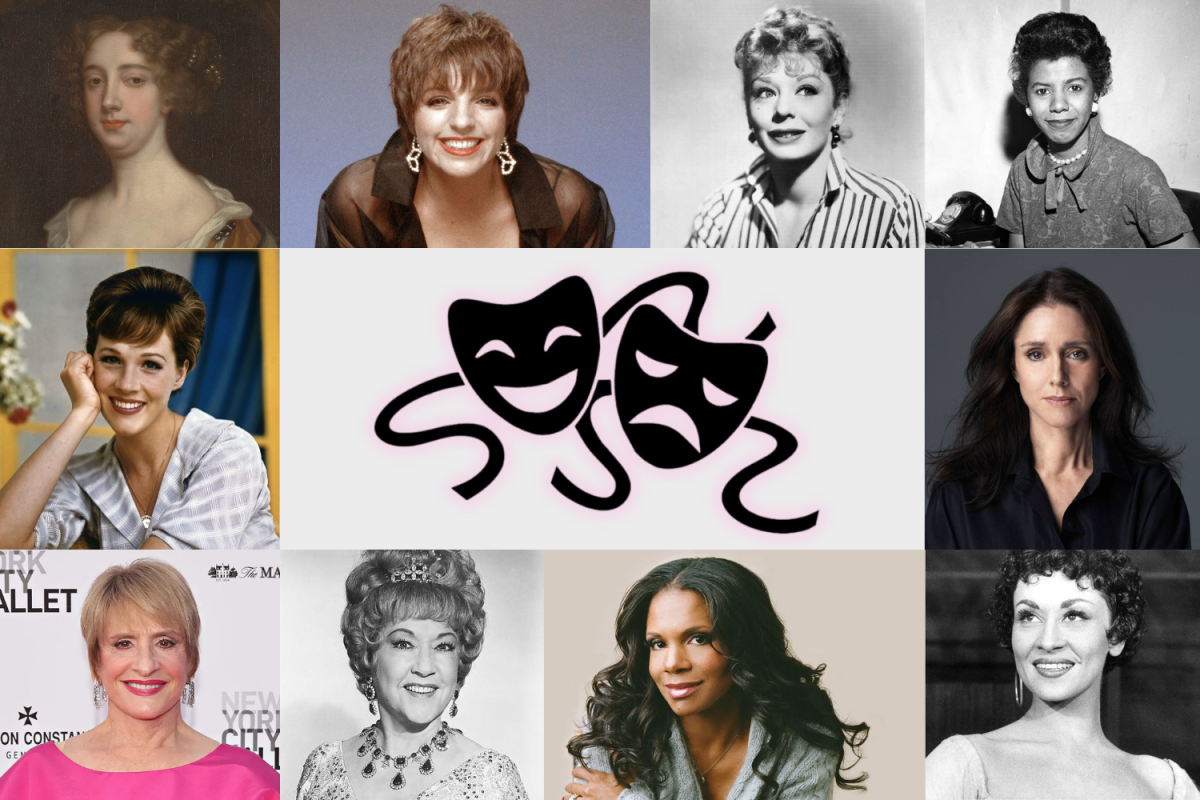In early modern theatre, Mr. William Shakespeare penned plays with significant female roles, such as Lady Macbeth in Macbeth, Viola in Twelfth Night, and Juliet in Romeo and Juliet. Even dating back to Ancient Greek theatre, characters such as Antigone, Medea, and Clytemnestra played central roles in tragedies. However, though Greek society highly respected the art form of theatre, it prohibited women from performing these roles, according to playbill.com. In Shakespearean theatre, too, traditional cultural norms led to men playing the roles of women on stage instead, according to rsc.org.uk. Since then, women have taken to the stage and served as trailblazers for diverse perspectives in theatre performance and production.
December 8, 1660 was the first time a professional actress appeared onstage in the King’s Company production of Shakespeare’s Othello, playing Desdemona. 18 years after English theatres closed due to the English Civil War. Their reopening introduced the radical and long-lasting shift in Western theatre of welcoming women to the stage. Despite this noteworthy occasion, audience members and the King’s Company production did not record the actress’s name. Historians believe that Desdemona was likely played by either Ms. Margaret Hughes or Ms. Anne Marshall, both of whom London theatrical companies later listed as playing Desdemona. Two years after this premiere, King Charles II issued patents to the King’s Company and Duke’s Company ensuring that they would permit women to perform onstage as long as they served as useful representations of human life and not simply engaging in delight and recreation, according to smithsonianmag.com.

In the 365 years following the first account of a woman on an English stage, female representation in performance has greatly redefined the art form. Playwrights in Ancient Greece often portrayed female characters as courageous and independent, while Mr. Shakespeare created memorable female characters with power, strength, and wit, according to iofthestormoffbroadway.com. Playwrights in the eighteenth and nineteenth centuries, such as Mr. Henrik Ibsen, introduced independent and multi-dimensional strong female protagonists. Plays featuring complex female characters have inspired women for centuries and continue to have a significant impact on the representation of women in theatre. Junior Callie Regnery has been in the cast of the fall plays and winter musicals since her freshman year at Sacred Heart Greenwich. She has participated in theatre from a young age and commented on how theatre can work as a vehicle to empower and amplify female voices.
“Theatre is art, and art is meant to stand out and be expressive, by nature,” Callie said. “If women use their powerful and strong voices to create a piece of art, that will not only empower themselves, but future generations to come as they will see the significance of what these women have done. Theatre has been crucial in my life to empower me and those around me, by lifting others up and putting all I have into it. It helps connect people, and the artists who create that connection value others and that helps grow a voice.”
From 1660 to the modern day, women have made strides onstage in mainstream theatre. Actresses in the twentieth century originated and performed in many leading lady roles in American musical theatre, such as Ms. Ethel Merman in Anything Goes and Annie Get Your Gun, Ms. Julie Andrews in My Fair Lady on Broadway and in the film adaptations of The Sound of Music and Thoroughly Modern Millie, Ms. Gwen Verdon as Roxie Hart in Chicago and Lola in Damn Yankees, Ms. Chita Rivera in West Side Story, Ms. Liza Minnelli as Sally Bowles in the film adaptation of Cabaret, and Mrs. Patti Lupone in the original Broadway production of Evita, according to denvercenter.org.

Not only have women created legacies in performing theatre, but they have also made notable contributions in production and design elements of modern theatre, fostering a diverse field with works from female perspectives. Playwright Ms. Lorraine Hansberry was the first Black woman playwright to produce a work on Broadway with the premiere of her play A Raisin in the Sun in 1959, according to denvercenter.org. Director Ms. Julie Taymor was the first woman to win a Tony Award for Best Direction of a Musical in 1988, also winning the Tony Award for Best Costume Design for Broadway’s The Lion King, one of the longest-running productions in Broadway history today. With female influence, modern theatre continues to evolve as a landscape with compelling stories and progressive art. Callie shared her perspective on female influences and representation in the performing arts as a whole.
“I think it is absolutely vital for female representation on and off the stage,” Callie said. “Women are so creative and have amazing ideas whether they are acting, directing, or doing something technical. I think every individual woman brings something special and integral to a production and without her, it is noticed. It empowers younger generations to believe they can be in the theatre community.”
Featured Image by Caroline Gammon ’26




